A construction machine is on fire at a tunnel construction site. The surrounding rock consists of anhydrite, which swells into gypsum in contact with water. For this reason, the senior site manager asked the fire services not to use water to extinguish the fire. It was one of the prominent challenges for the Stuttgart Fire Service during an operation, which Michael Czech from the Stuttgart Fire Service reported on in his report.
Attack routes long or blocked
On 10 April 2019, the emergency team at the Stuttgart 21 tunnel construction site reported a fire involving a construction machine. Just six minutes later, the first members of the Stuttgart Fire Service arrived at the scene and found the following situation: A concrete spraying machine in tunnel tube 61 was on fire carrying 300 litres of hydraulic oil and 120 litres of diesel. The smoke spread in the direction of the main railway station. The attack route was around 670 metres. An attack via the unaffected tunnel tube 62 proved to be difficult because it was blocked by a large construction machine. The incident command, therefore, decided to proceed with the attack despite the partial smoke spread in tube 61.
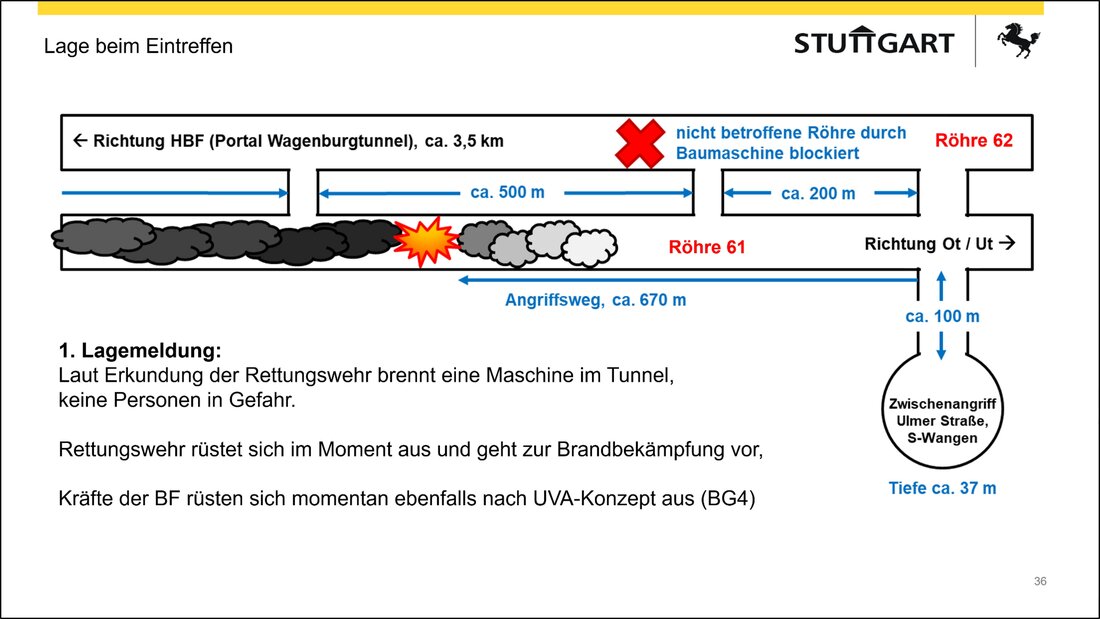
Complicated fire attack without water
As the tunnel rock in the area of the fire consists of anhydrite, the senior site manager requested that powder and CO2 be used as extinguishing agents. The reason is that anhydrite swells when exposed to water, which can lead to instability in the rock around the tunnel.
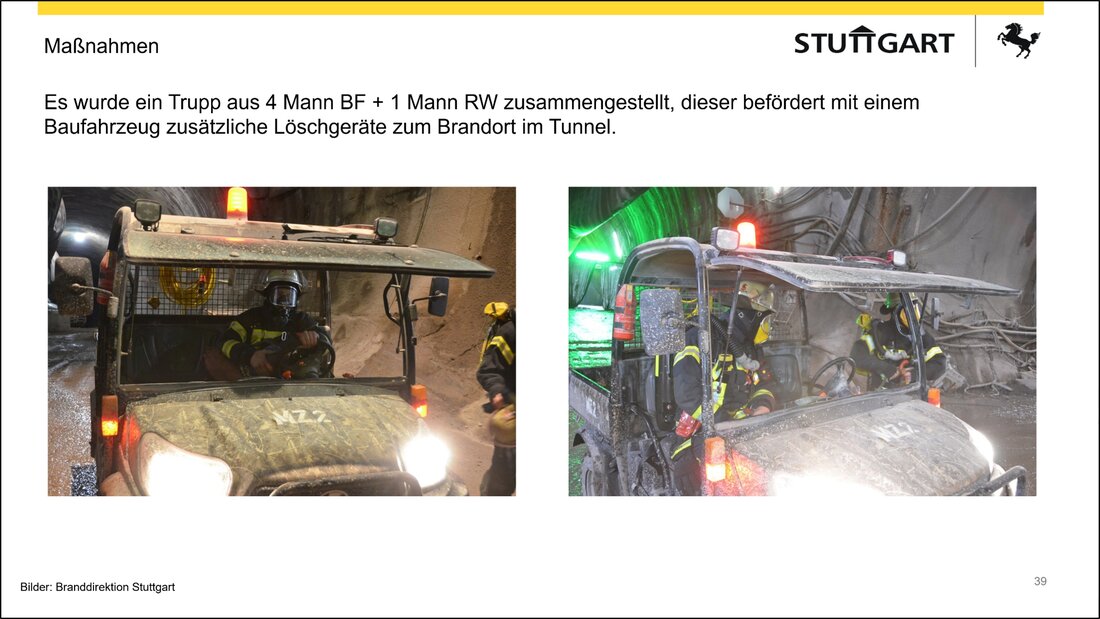
After ensuring that no people were in danger, the incident command decided not to use water, even though this considerably delayed the firefighting operation. The powder extinguishers stationed on site were quickly used up, which is why large quantities of mobile powder extinguishers had to be brought in. The extinguishing effect was limited. The fire kept flaring up.
Burning machine towed away
Once the fire had been largely brought under control, the emergency services from the Stuttgart fire service and the construction site emergency team towed the partially still-burning construction machine to an area where water could be used without affecting the rock.
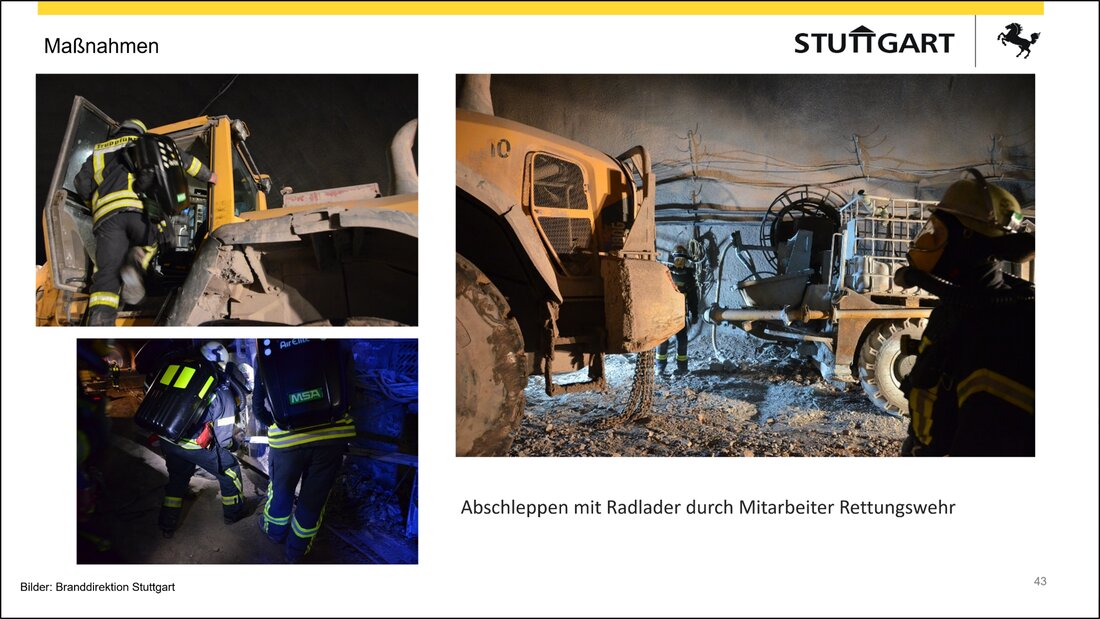
The fire was extinguished entirely just over four hours after arriving at the scene. Although it took an unusually long time to extinguish a construction vehicle, Michael Czech explains, damage to the tunnel structure could be successfully avoided only by not using water as an extinguishing agent. However, the decisive prerequisite for this was ensuring that no people were in danger first.
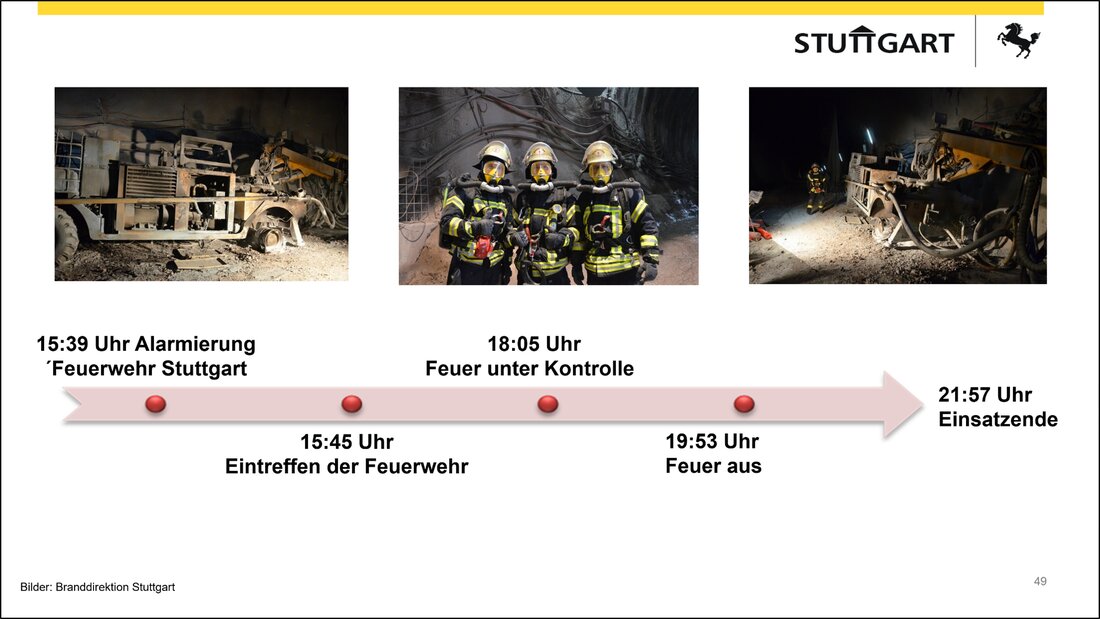
A high degree of flexibility is helpful
One of the key lessons learnt by Michael Czech from this assignment is that it is possible to deviate from the deployment plan if this allows better conditions to be achieved. For example, the incident command was not positioned at the control centre but close to the tunnel's entrance, resulting in advantageously short distances.
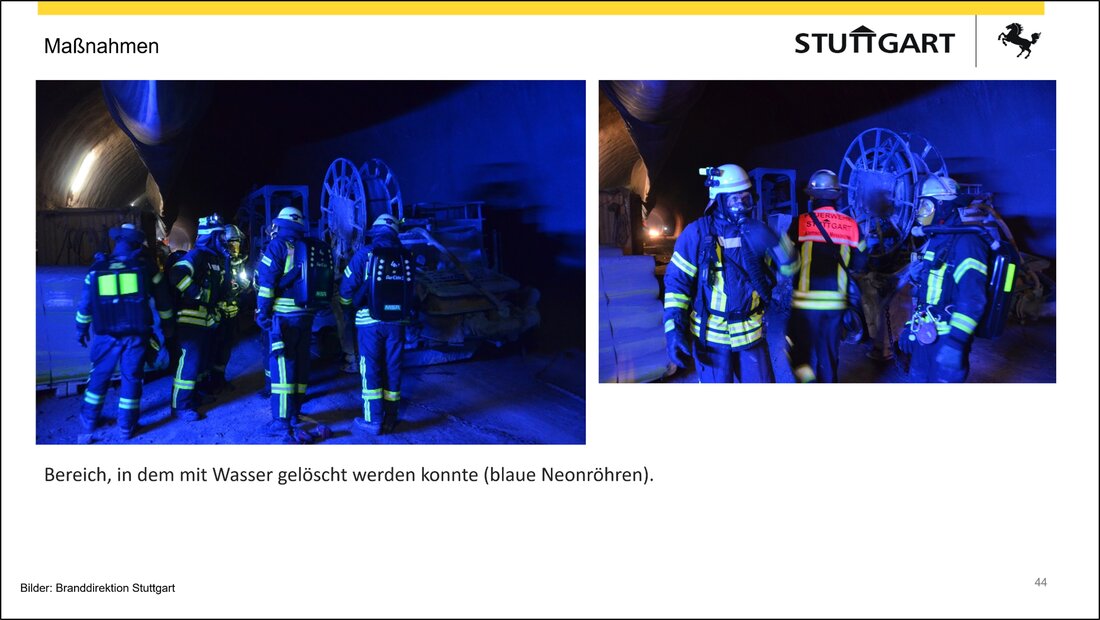
Michael Czech considers the use of tablets and smartphones to be helpful in quickly transmitting images of the scene to other emergency personnel involved or in calling up operational plans, for example. It can significantly facilitate (otherwise purely verbal) communication between officers.
Finally, according to Michael Czech, the builder provided the catering for the emergency personnel - «and it was perfect».





